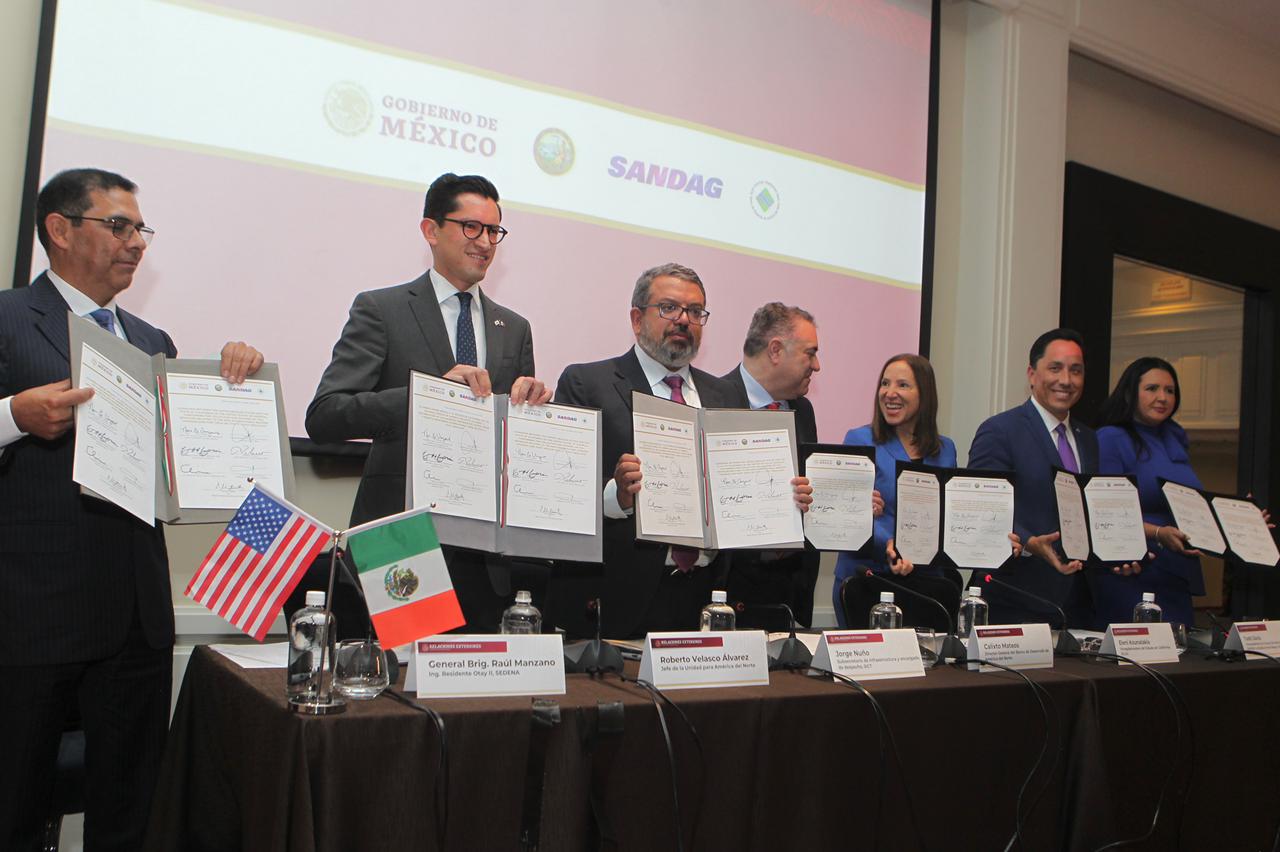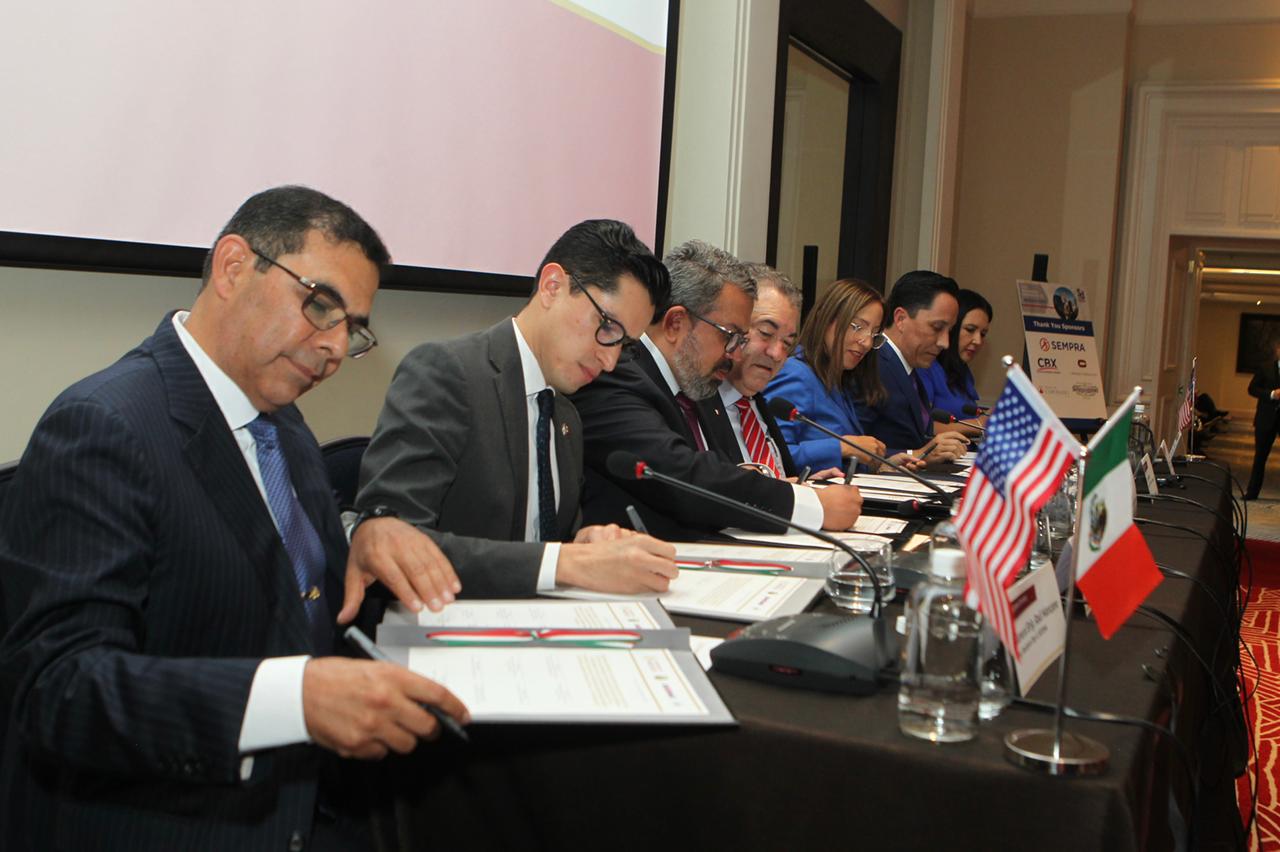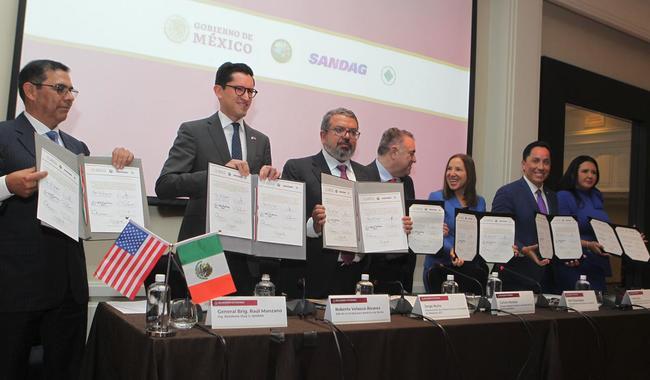- The new Mesa de Otay II – Otay Mesa East international border crossing and port will be the first to feature a single toll collection point. The binational investment made in this project will streamline trade on both sides of the border.
A signing ceremony for the Revenue Collection and Distribution Agreement for the new Mesa de II - Otay Mesa East port of entry was held today in Mexico City. Attending for the Mexican government were Jorge Nuño, Undersecretary of Infrastructure and acting Secretary of the Ministry of Infrastructure, Communications and Transportation (SICT), and Roberto Velasco, Chief Officer for North America, Foreign Ministry. Attending on behalf of the California state government were Lieutenant Governor Eleni Kounalakis, and Todd Gloria, Mayor of San Diego and Vice President of the San Diego Association of Governments.
This afternoon's signing follows up on the Memorandum of Understanding signed in June 2021, which established the intention of both countries to collaborate on a strategy to manage traffic congestion and collect revenues based on variable tolls, with the toll collected in both directions, north and south, at a single collection point in California.
Jorge Nuño said that the new Mesa de Otay II international border crossing and port will create important savings in operating expenses by having a single facility, specifically a single toll booth, on the US side. Importantly, the users will save a significant amount of time.
He said that national and binational steps have been taken to coordinate and standardize the technical and operational aspects of the border crossing, and to use technology and novel techniques such as interchangeable lanes by using connected intelligent transport systems in both countries. "This will provide an efficient and attractive border crossing," he said.
Roberto Velasco noted, "These infrastructure projects are critical to the continued integration of North American supply chains. They reinforce the excellent relationship between Mexico and California." He highlighted the innovation and positive impact on the environment and safety that the infrastructure project will provide.
The agreement signed today ensures the equitable distribution of the toll between both countries and addresses the operation and maintenance of the port. It creates a Binational Working Group for this purpose, which will serve as a non-governmental administrative body to agree on the processes for setting the toll, and collecting and distributing the income. It will have the support of the North American Development Bank.
Long-term toll revenues are estimated at approximately 5.3 billion pesos through 2062; they will be distributed equally between the San Diego Association of Governments and the Mexican Ministry of Infrastructure, Communications and Transportation.
The new border port will improve waiting times in the region and reduce traffic at nearby crossings by giving users an additional crossing option.
The innovative aspect of the project is the Intelligent Transportation System, which integrates the highway toll infrastructure with traffic management systems; border waiting time systems; real-time traffic information; highway lane management; variable message signs, and communication and data exchange systems.
The signing of this agreement marks the beginning of a vitally important infrastructure project. It exemplifies the commitment of both governments to constructing the new port, which will be essential for the economic development of both countries in the 21st century.


